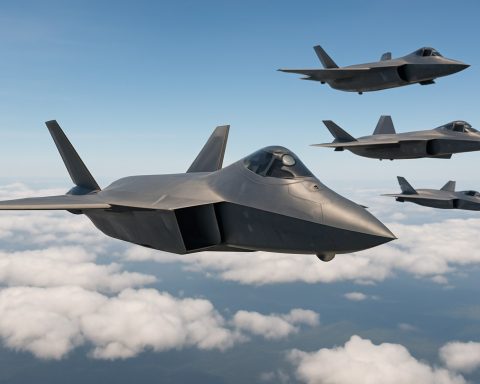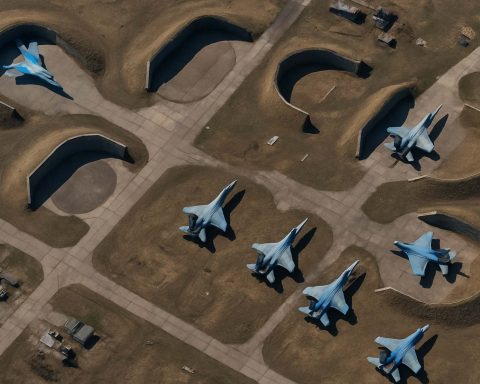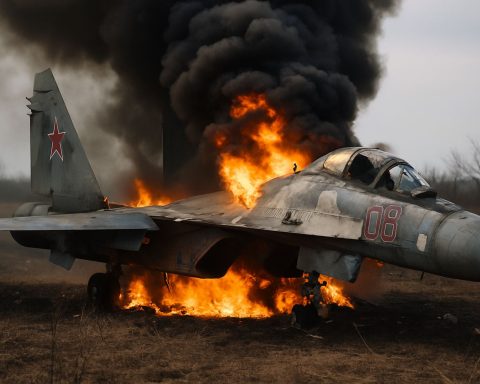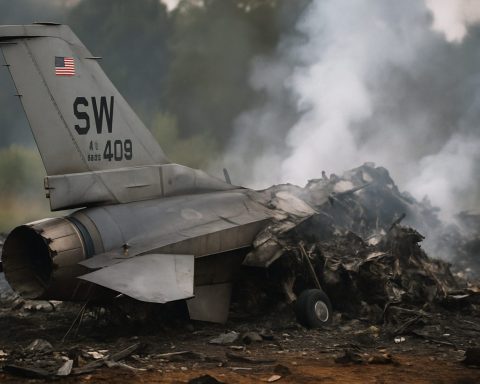- Canada grapples with replacing aging CF-18 fighter jets amid rising global tensions.
- Temporary solution: purchasing used F/A-18 Hornets from Australia for $1.09 billion.
- Integration challenges: shortages in spare parts, trained personnel, and radar upgrades.
- Critics deem the acquisition a short-term fix, urging for a long-term defense strategy.
- Growing geopolitical tensions highlight the urgency for Canada to strengthen air defenses.
- The Canadian Air Force risks losing relevance unless decisive, future-first actions are taken.
- Ensuring national security and international standing requires beyond-quick-fixes solutions.
Against the backdrop of a vast northern sky, Canada faces a daunting decision: how to replace its fleet of aging CF-18 fighter jets. As tensions rise on the global stage, the Royal Canadian Air Force (RCAF) finds its capabilities tied to the frayed strings of jets that were first acquired when big hair and leather jackets were in vogue—the 1980s. Yet, solutions remain mired in political back-and-forths and logistical quagmires.
Amid the clamor for a modern fleet, Canada made a pragmatic albeit temporary move by purchasing used F/A-18 Hornets from down under. These secondhand warriors from the Royal Australian Air Force were not merely a bargain—they were a lifeline. The swift acquisition allowed Canada to plug the operational gaps at a fraction of the cost of new aircraft, with the price tag of the whole endeavor amounting to $1.09 billion. Quick and economical, yes, but certainly not without strings attached.
The Australian jets, once roaring over the Outback, flew swiftly into Canadian hands beginning in 2019. Though the transfer was efficient, integrating them into the Canadian fleet was anything but smooth. Canada soon discovered that these winged saviors came with hidden costs. Spare parts were scarce, and the trained personnel needed to stitch these aircraft into the existing framework were largely absent. Even the radar upgrades—intended to deliver more high-tech sight—proved slower than expected due to technical integration challenges.
Yet, these acquisitions only postpone the inevitable. Critics argue that political dithering has left the RCAF suspended in a holding pattern, with interim solutions like the Australian Hornets serving as a mere band-aid, not a cure. The clock is ticking for Canada to solidify a committed, long-term strategy to rejuvenate its air defenses.
Globally, militaries are on high alert with growing geopolitical tensions adding urgency to Canada’s defense considerations. The temporary Australian fix may enable Canada to keep pace in the short term, offering minimal security assurances and allowing continued engagements with international defense commitments. However, it neither closes the gaping capability void nor does it guarantee sustained air superiority.
The broader implication looms ominously: With each passing day, Canadian jets age out of relevance, underscoring an already complex issue within the country’s defense strategy. Canada’s air force hangs in the balance, its security resting on wing and prayer unless decisive action propels it beyond quick fixes to substantial solutions.
The time has come for Canada to look beyond the band-aid and address its fighter jet crisis with a comprehensive, future-first approach. Doing so is vital not just for maintaining national security but for affirming its place among global defense powerhouses.
How Canada Can Skyrocket to the Future: Solving the Fighter Jet Crisis
A Comprehensive Guide to Canada’s Fighter Jet Dilemma
Canada’s quest to rejuvenate its aging fleet of CF-18 fighter jets unveils a pressing issue with global implications. As geopolitical tensions rise, Canada faces mounting pressure to update its air defenses. Here’s an in-depth examination of the challenges, solutions, and future strategies that define this critical transition.
Key Challenges in Canada’s Current Fleet Situation
1. Aging Fleet: Canada’s CF-18 jets, first introduced in the 1980s, are quickly becoming obsolete, causing strain on maintenance and operational capabilities.
2. Band-Aid Solutions: The acquisition of used F/A-18 Hornets from Australia—though cost-effective—only offers a short-term fix. Integrating these jets into Canada’s existing framework revealed challenges including spare parts scarcity and personnel training issues.
3. Political Stalemate: Ongoing debates and political indecision continue to delay long-term procurement plans, compromising national security.
4. Technical Integration Issues: Radar and other avionics upgrades are taking longer than expected, complicating integration efforts.
How-To Steps for a Future-Ready Air Defense Strategy
1. Develop a Long-Term Acquisition Plan: Prioritize a clear timeline and strategy for procuring new fighter jets that fit Canada’s defense needs. A competitive procurement process, possibly involving models like the F-35 Lightning II or the Eurofighter Typhoon, should be considered.
2. Investment in Training and Infrastructure: Allocate resources for training personnel and updating infrastructure to accommodate next-generation fighter jets.
3. Emphasize Domestic Production: Encourage partnerships with domestic companies to foster an aircraft industry that could support parts manufacturing and maintenance.
4. Multilateral Defense Engagements: Enhance cooperation with allied nations to share technological advancements and best practices in aerospace defense systems.
5. Diversify Defense Contracts: Avoid over-reliance on a single supplier to mitigate risks associated with international trade and diplomacy.
Real-World Use Cases: How Other Nations Handle Fighter Jet Upgrades
– Australia: Transitioned from F/A-18 Hornets to F-35 Jets to ensure modern air defense capabilities.
– Norway: Successfully integrated F-35s into their air force by investing in adequate training and support infrastructure.
Industry Trends & Predictions
– Increasing Shift to Multi-Role Fighters: Demand for jets that perform diverse roles—from air defense to ground support—continues to rise.
– Emphasis on Stealth and Supersonic Capabilities: Future jets will focus on stealth technologies and supersonic speed to counter evolving threats.
– AI and Network-Centric Warfare: Aircraft equipped with advanced AI and integrated cyber systems will shape the future battlefield.
Pros & Cons Overview
– Pros of Modernization: Improved national security, ability to meet international commitments, enhanced interoperability with allies.
– Cons of Delay: Increased costs over time, compromised defense readiness, potential inability to counter modern threats.
Actionable Recommendations
– Immediate Policy Action: The Canadian government should expedite decision-making processes involving new jet procurements.
– Community and Industry Engagement: Keep the public informed and engage with industry stakeholders to create transparent dialogues on defense strategies.
– Security and Sustainability Initiatives: Develop eco-friendly policies to minimize the environmental impact of new fighter jet technologies.
For ongoing developments and information on Canada’s defense initiatives, visit the Government of Canada’s official site.
Quick Tips for Staying Informed
1. Follow Defense News Outlets: Regularly check defense-related news for updates on military procurement processes.
2. Join Defense Forums: Engage in forums or discussion groups dedicated to military aviation to gain diverse insights.
3. Attend Airshows and Expos: Participate in industry events to see the latest advancements in fighter jet technologies.
By acting decisively and with foresight, Canada can address its fighter jet crisis and bolster its standing on the global defense stage.







